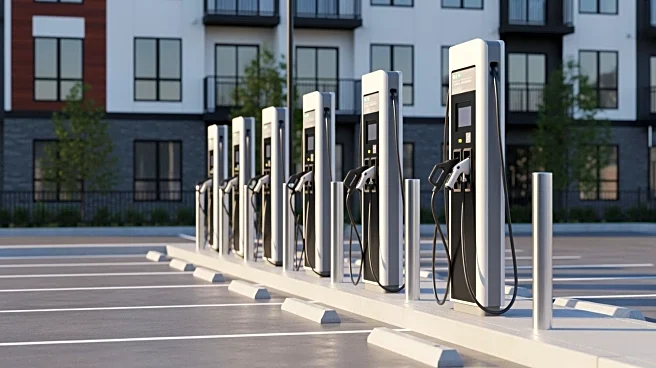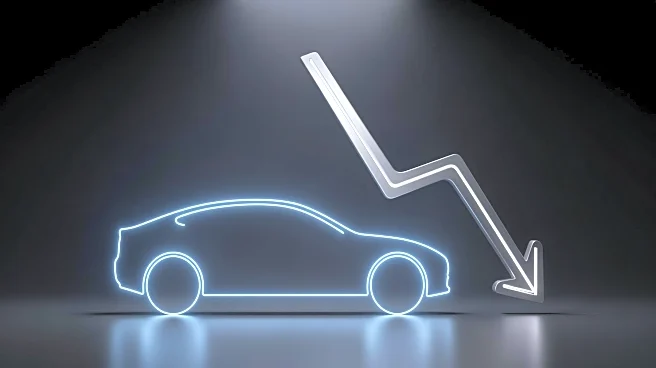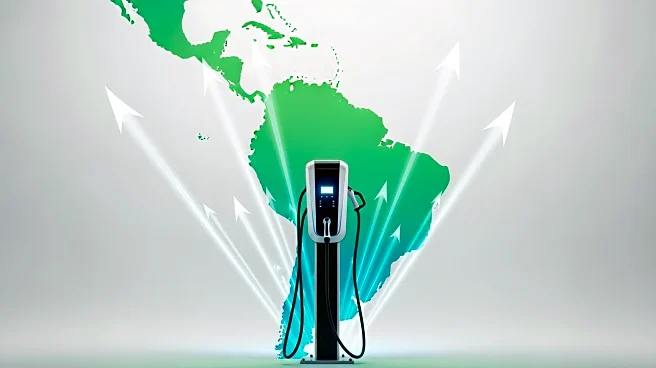What's Happening?
In October 2025, the United States saw a significant drop in plugin vehicle sales, with a 26.9% decrease compared to October 2024. A total of 91,067 plugin vehicles were sold, comprising 74,897 battery electric vehicles (BEVs) and 16,170 plugin hybrid
electric vehicles (PHEVs). This decline follows a temporary boost in sales during September due to the expiration of the US EV tax credit. Despite the drop, plugin vehicles captured 7.16% of total light-duty vehicle sales for the month. The cumulative sales of plugin electric vehicles in the U.S. have reached over 7.6 million as of the end of October 2025.
Why It's Important?
The decline in plugin vehicle sales highlights the volatility in the electric vehicle market, influenced by policy changes such as the expiration of tax credits. This reduction in sales could impact manufacturers and stakeholders who rely on consistent growth in the EV sector. The decrease also underscores the importance of government incentives in driving consumer adoption of electric vehicles. As the market adjusts, automakers may need to explore new strategies to maintain sales momentum and address consumer concerns about affordability and infrastructure.
What's Next?
The drop in sales may prompt discussions among policymakers and industry leaders about the need for renewed incentives or alternative measures to support the EV market. Automakers might focus on enhancing vehicle affordability and expanding charging infrastructure to attract more buyers. Additionally, the industry could see increased investment in marketing and education efforts to raise awareness about the benefits of electric vehicles and encourage adoption.
Beyond the Headlines
The fluctuation in plugin vehicle sales reflects broader economic and political dynamics affecting the automotive industry. As the market evolves, there may be shifts in consumer preferences towards more sustainable transportation options. This trend could lead to long-term changes in manufacturing practices, supply chain management, and environmental policies, influencing the future landscape of the automotive sector.













